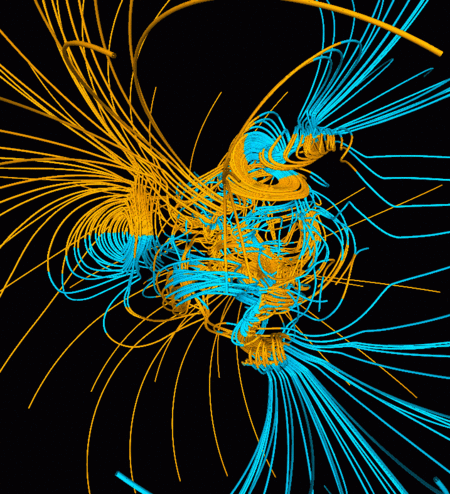-
 SNP
SNP
-
 Residual deposit
Residual deposit
-
 Calvin cycle
Calvin cycle
-
 Food bolus
Food bolus
-
 Colloid
Colloid
-
 Jovian
Jovian
-
 Parkinson's Disease
Parkinson's Disease
-
 Vestigial structure
Vestigial structure
-
 Carrier
Carrier
-
 Urate
Urate
-
 Conductivity
Conductivity
-
 Pelleting
Pelleting
-
 Calcite
Calcite
-
 Power consumption
Power consumption
-
 Abscess
Abscess
-
 Echocardiogram
Echocardiogram
-
 ESO
ESO
-
 Tripton
Tripton
-
 Arterial hypertension
Arterial hypertension
-
 Venus
Venus
-
 Entropy
Entropy
-
 Diagnosis
Diagnosis
-
 Hour circle of a direction
Hour circle of a direction
-
 Smog
Smog
-
 Polysynthetic
Polysynthetic
-
 Nicotinic acid
Nicotinic acid
-
 Polar bear
Polar bear
-
 Lidar
Lidar
-
 Actomyosin
Actomyosin
-
 Electrolysis
Electrolysis
Magnetic inversion
Magnetic inversions are a phenomenon related to the Earth's magnetic field and are a periodic change in the polarity of the field over geological time
They were discovered in 1905 by Bernard Brunhes when he was director of the Puy de Dôme observatory in Clermont-Ferrand in Auvergne. This geophysicist revealed that certain rocks, such as lava flows, that are able to memorise the direction of the earth's magnetic field at a given time, clearly indicated that in earlier times a compass would have pointed not north but south. A few years later, the Japanese geophysicist Matuyama was to make the same discovery, but still failed to convince the scientific community. From the 1950s, and above all following the striking publication in 1963 by Vines and Matthews, the existence of a series of global inversions of the orientation of the Earth's magnetic field not only imposed itself but was found to lie at the heart of Wegener's theory of continental drift. A chronology of these inversions has been established as can be seen below

On cooling, the lava flows record the Earth's magnetic field at the time. These records give chronologies one of which is named after Bernard Brunhes.
Credit: Pierre-André Bourque and Pauline Dansereau.
A lot of theoretical work has been done on the origin of these inversions, especially using digital simulation and also laboratory experiments. The magnetic field of the earth is supposed to come from what we call the self-exciting dynamo. This is also often called the dynamo effect.
The modern explanation stems partially from attempts by Larmor in 1919 to explain the magnetic field of sunspots in this way. He had already noted that this theory could also be applied to the Earth providing it possessed a fluid conducting part. The work of seismologists Inge Lehmann and Harold Jeffreys finally provided the proof.
Their work on developing the self-excited dynamo theory gained momentum, but they hit a serious stumbling block with Cowling's "no-go" theorem in 1934. As is always the case, a theorem of impossibility only holds to the extent of its assumptions, in this case of axisymmetry, and if we add turbulent movements in the conducting liquid iron core, the objection is lifted! Today, digital simulations and laboratory experiments on self-excited dynamos reproducing the Earth's magnetic field and its inversions show that the pioneers of the geodynamo theory, among whom are Elssaser, Bullard and above all Braginsky, were right not to be halted by this theorem.
 Digital simulation of the inversion of the Earth's magnetic field. (Credit : Gary A Glatzmaier)
Digital simulation of the inversion of the Earth's magnetic field. (Credit : Gary A Glatzmaier)
Latest
Fill out my online form.



